The rate at which data center technology is changing has made access to high-speed connectivity more critical than ever. Mellanox QSFP28 optical transceivers are at the front line for this revolution; they are a good remedy for applications that require a lot of bandwidth. This guide will deeply explore how these devices work, their benefits, and how they can be implemented in various computer networks. To find out what precisely these specifications mean and look into some practical applications, read through the article designed to guide IT professionals who want to enhance their connectivity solutions. As we demystify new-generation optical transceivers and show you how they can drive your network better, please feel free to walk with us.
What is a Mellanox QSFP28 Optical Transceiver?
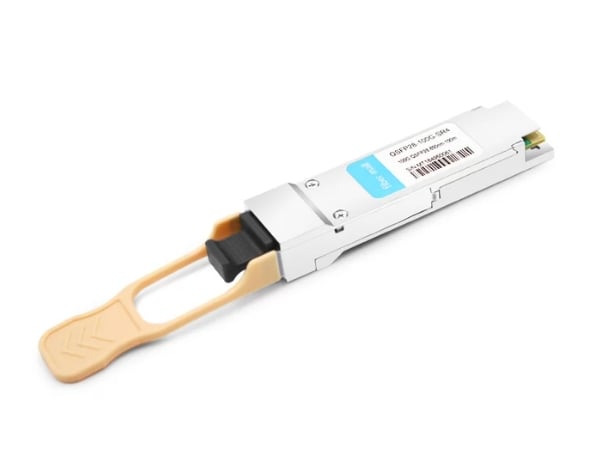
Understanding the Basics of Transceiver Modules
In contemporary computer networks, transceiver modules are essential components that enable transmitting and receiving information over various media, such as optical fibers and copper cables. A transceiver is a device that has both a transmitter and receiver put together in one unit for bidirectional communication. Transceivers change electrical signals into light signals and back to electrical signals. In the case of optical transceivers such as Mellanox QSFP28, multiple parallel channels are used to achieve high data rates that can reach up to 100 Gbps. Apart from this, they can be easily removed without interrupting network services; hence, they have been designed to become hot-swappable, which is a critical feature for maintaining the high availability of data centers. Both designing and implementing robust and fast high-speed networking solutions require IT professionals to have this knowledge.
How Does a QSFP28 Transceiver Function?
The QSFP28 transceiver uses four channels, each transmitting data at 25 Gbps, to achieve a total throughput of 100 Gbps. It works by changing electrical data from the host system into optical signals and sending them over fiber optic cables. On reception, the opposite happens; optical signals are changed back into electrical data for processing by the receiver system. This is possible through sophisticated modulation techniques and wavelength multiplexing, which enable optimal use of bandwidth and allow for a maximum of 100 Gbps transmission. The layout also features integrated diagnostic capabilities to track performance metrics and ensure efficient operation in a network environment. Being highly effective and efficient, QSFP28 is a good option for enterprise and data center applications involving bulk data management and processing processes.
Key Features of Mellanox Optical Transceivers
They are feature engineered Mellanox optical transceivers for high performance and reliability, ensuring they are functional in networking environments. These features include:
- High Data Rates: For demanding applications, advanced modulation techniques are used to provide a rapid transfer of data, and different data rates, such as 100Gbps and 200Gbps, are involved.
- Versatile Form Factors: These transceivers have multiple form factors such as QSFP28 or QSFP56 to suit diverse connectivity requirements over various network topologies.
- Extended Reach: Based on the type of fiber optic used, it is possible for them to function across changing distances which range from few hundred meters up to more than 10 kilometers.
- Low Power Consumption: While still minimizing power usage, Mellanox transceivers are highly efficient in terms of energy since they maintain low throughput but with high power efficiency in data centers.
- Comprehensive Diagnostics: To ensure quality operations within networks this includes among others temperature or voltage monitoring capabilities via digital diagnostics monitoring (DDM).
- Hot-swappable Design: There is no breakage in network traffic flow because these devices allow for replacement and upgrades without turning off the network systems.
These features make Mellanox optical transceivers an ideal choice for organizations that want reliable, scalable and efficient networking infrastructure.
How do Mellanox® Networks Utilize 100G Technology?
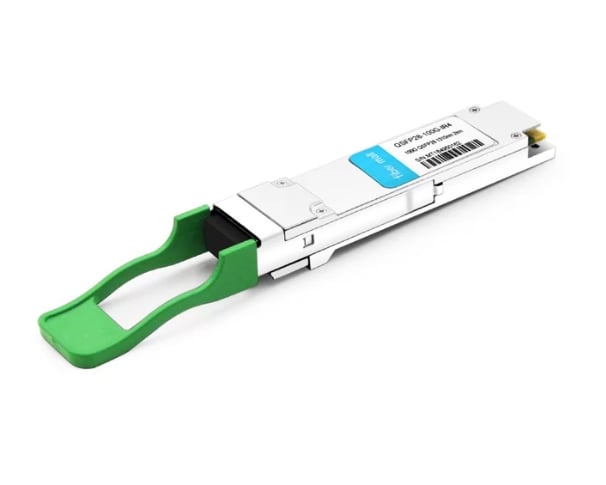
The Role of Ethernet in Modern Networking
From a mere local area network (LAN) technology, Ethernet evolved to become one of the basic layers in today’s networking infrastructure. It allows high-speed data transfer and compatibility between various devices and platforms. Ethernet assures dependable connectivity in data centers and enterprise environments through the introduction of standards such as Ethernet over fiber and the support for various data rates, including 100G and beyond. Its wide usage across different protocols makes it an essential part that can enable high-performance networking solutions that address cloud computing, big data applications, and virtualized environments, among others.
Why Choose Mellanox for 100 Gigabit Ethernet Solutions?
A combination of high-performance hardware, advanced networking capabilities, and robust support services is a compelling value proposition for organizations looking for 100 Gigabit Ethernet solutions. These products are designed to be highly efficient, with low latency and higher throughput performance required in data-intensive applications. They help transfer data faster and with less CPU overhead by supporting RDMA technology, which boosts overall system efficiency. Furthermore, Mellanox has a vast ecosystem of compatible devices that enhance interoperability and scalability, enabling businesses to grow their networks seamlessly when operational demands increase. This means that if one opts for Mellanox, it guarantees them the latest technologies and reliable performance necessary to conquer any future challenges in networking the organization might face.
Integrating Fiber and Cable Options
When 100 Gigabit Ethernet solutions regarding fiber and cable options are implemented, organizations must consider several essential factors that will improve performance and compatibility. To begin with, picking out the right type of fiber- single-mode or multi-mode is very critical because it determines the distance and bandwidth characteristics. Single-mode fibers are suitable for longer distances and higher data rates, while multi-mode fibers are generally more cost-effective for shorter runs. Moreover, one should be familiar with cable construction to maintain signal integrity; this entails considering factors such as bend radius and environmental resistance.
Additionally, companies should consider active versus passive optical networks (AON versus PON) under their specific use cases. Active solutions usually offer more flexibility and scalability in dynamic networking environments, while passive systems may reduce costs during static deployments. New installations must also be compatible with existing network infrastructure to enable seamless integration without significant overhauls into current systems. Consequently, a well-pondered approach to incorporating fiber and cable guarantees impregnability and productivity within high-speed networking scenarios, thus enabling an organization to cope effectively with changing bandwidth demands.
Comparing QSFP28 100G Models
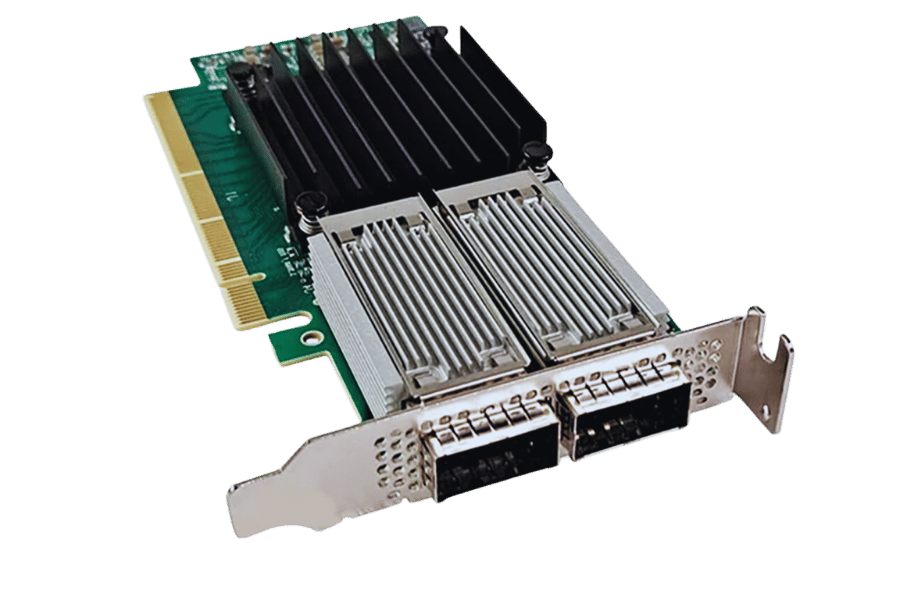
What is MMA1B00-C100D, and Who Should Use It?
This transceiver module, called MMA1B00-C100D, is a 100 Gigabit Ethernet over multimode fiber with QSFP28 form factor. This supports data rates of up to 100 Gbps, making it ideal for short distances like within the datacenter or enterprise network. It is perfect for organizations that require high bandwidth and low latency in narrow spaces, with power being an essential consideration. Potential users may include network engineers and IT managers who want to upgrade existing infrastructure or add new high-speed connections that are compatible with current hardware. By using MMA1B00-C100D, the overall performance of a network is improved by meeting the demands for higher data processing and transfer rates.
Differences Between QSFP28 DAC and 100GBASE-LR4
There are two types of cables that can be used in high speed networking – the QSFP28 Direct Attach Copper (DAC) cables and 100GBASE-LR4 optical transceivers each with its own role to play in terms of the application area and where they are deployed.
- Transmission Medium: Within a short range, such as within a rack or between two racks, QSFP28 DAC provides copper-based links while 100GBASE-LR4 uses optics for transmission over multimode or singlemode fiber up to ten kilometers away.
- Cost: In terms of cost, DACs have an edge over 100GBASE-LR4 transceivers due to the fact that irrelevant optical modules and fiber infrastructure are not needed making it suitable for low latency, high-speed connections within data centers having shorter distances but budget conscious installations.
- Power Consumption: Generally speaking, power consumed by DAC solutions is less compared to 100GBASE-SL4 modules which means that there is an advantage in energy efficiency particularly when there are huge demands for electricity in large data centers. However, because of its better performance and ability to cover long distances, 100GBASE-LR4 often consumes more power for extensive interconnects.
Selection between QSFP28 DAC or 100GBASE-LR4 depends on the nature of network requirements, such as distance, budget, and compatibility issues with infrastructure.
Exploring the QSFP and MPO Interfaces
The quad small form-factor pluggable (QSFP) interface is designed for high-speed data transmission, allowing multiple data streams to be carried simultaneously over one link. This small form factor supports a range of protocols such as Ethernet, Fibre Channel, and InfiniBand, enabling them to be used in different networking applications. The main benefit of QSFP technology lies in its ability to support 40 Gbps, 100 Gbps and up to 400 Gbps data rates depending on the version thus increasing bandwidth in modern day data centers.
On the other hand, multi-fiber push-on (MPO) connector is essential in high-density fiber optic cable systems. It enables faster and more effective connections between several fiber strands within a single connector, which is usually used in data centers and enterprise networks. MPO connectors are typically employed with QSFP modules in order to achieve high-density applications that integrate optical fibers effortlessly to optimize space while streamlining network cabling management. Both interfaces, when put together, provide efficient, scalable solutions that have been developed for data transmission on-demand environments, enhancing overall network performance.
How to Ensure Compatibility in Your Network?
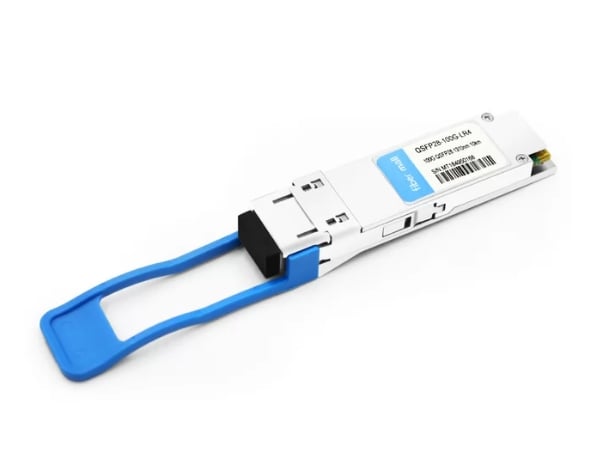
Compliant Standards and IEEE Guidelines
To guarantee compatibility in your network, it is crucial to comply with relevant standards and guidelines established by such bodies as IEEE (Institute of Electrical and Electronics Engineers) and TIA (Telecommunications Industry Association). Ethernet networking is governed by the IEEE 802.3 standard that describes different data rates: 100GBASE and related technologies. Your equipment, such as QSFP modules and MPO connectors, should be compliant with the latest IEEE 802.3 standards for them to interoperate within your existing network infrastructure effectively.
Furthermore, this TIA-568 series gives basic guidelines for structured cabling in commercial buildings addressing installation practices, validation procedures, and performance requirements, among others. Observing these stipulations can help tackle signal integrity issues and transmission distances, thus ensuring high-performance reliability in high-speed networking environments. Always be on the lookout for regular updates to these standards to accommodate emerging technologies and best practices that ensure compatibility and optimize the efficiency of a network.
Using LC, MMF, and SMF in Fiber Networks
To ensure high-density connections, which are important in space-constrained environments, LC (Lucent Connector) interfaces have been introduced in fiber networks. The best for multi-mode fibers (MMFs), LC connectors enable to serve short-range data transmission due to low loss and cheapness. On the other hand, single-mode fibers (SMFs) are preferred for long-distance communication because of their minimum signal loss over extended distances. Whenever these components are being integrated, appropriate installation methods and performance standards must be followed to preserve signal integrity throughout the whole process and get maximum network performance. It is essential before one gets down to purchasing a cable for an application that one understands the kind of information that needs to pass through this fiber optic as well as the distance between two points involved.
Checking Compatibility Confirmation with Other Devices
Verifying compatibility with other devices before installation is significant for ensuring seamless integration of network components. This involves evaluating connector types, data rates, and transmission protocols. A good number of manufacturers typically have detailed compatibility matrices that show which devices can work together under a given network configuration. Additionally, tools like network analyzers come in handy when determining link quality and identifying any possible problems that might be encountered. Conducting a comprehensive check for compatibility before rolling out minimizes performance loss risks and increases the overall dependability of network infrastructure. In addition, it is also essential to check regularly for firmware and software updates in network devices to ascertain continued compatibility with advancing technology.
What are the Return Policy and Warranty Details for Mellanox® Products?

Understanding the Return Policy Conditions
Typically, Mellanox® Products are sold with a time-limited return policy that allows for the return of items within a specific time frame after purchase, usually 30 days only if the products are in pristine condition and packaging. Some returns may be subject to certain conditions, including but not limited to compliance with warranty terms; documentation or all accessories might need to be accompanied. The return process must be initiated through the issuance of a Return Merchandise Authorization (RMA) number which simplifies tracking as well as processing. For any variations or exclusions concerning this matter, one must carefully read the company’s website or other agreements made when buying it.
How to File a Warranty Claim for Your QSFP28 Transceiver
Should you decide to file a warranty claim for your QSFP28 transceiver, apply the procedures below:
- Gather Required Information. Gather all relevant documents including your purchase receipt, serial number of the transceiver and any prior customer support communication pertaining to this matter.
- Complete The Warranty Claim Form. Visit the manufacturer’s website, which usually has the warranty claim form under support or warranty. It should be filled in correctly with clear information about performance problems faced by the transceiver and troubleshooting steps done.
- Submit Your Claim. After filling in the form, submit it as per the given instructions, like uploading documentation online or sending it through email.
- Obtain an RMA Number. In case your claim is approved, you will receive a Return Merchandise Authorization (RMA) number from the company. This number is important because it helps in facilitating return procedure and ensures that your claim is tracked properly.
- Return The Product. Prepare the transceiver securely along with all other components as per provided guidelines together with your RMA number and ship it back. Remember to take note of shipping method and tracking number used.
- Follow Up. Once you send it, check out how far their customer service channels can help track status of your product since majority companies provide a way of checking progress on their platform for claims filed within them about warranties.
These steps will make claiming a warranty for your QSFP28 transceiver easier and faster; however, always follow specific manufacturer’s guidance since processes may vary between different firms.
Contacting Customer Service within One Business Day
You must take all relevant information about your problem so that you can contact customer service within one day; this includes product details of the item and previous correspondence. Go to the manufacturer’s website or customer services platform in search of the right number or email address to call. When doing so, you need to explain in simple terms what your concerns are including RMA # (if necessary), order number, and a brief description of the issue itself. You may be asked to provide certain documents or evidence that would support your query. To ensure prompt feedback, try reaching out early in the morning.
Reference Sources
Frequently Asked Questions (FAQs)
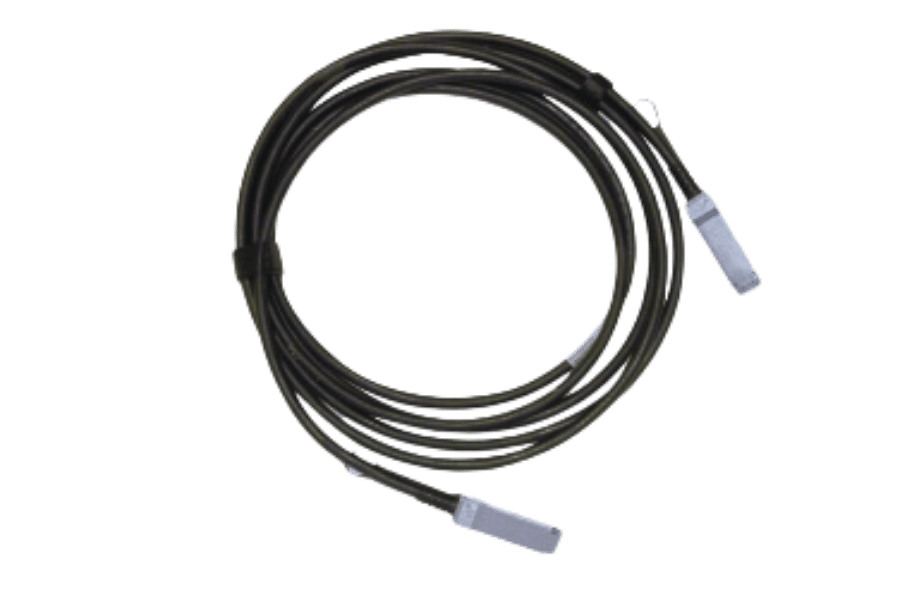
Q: What is a Mellanox QSFP28 transceiver?
A: A Mellanox QSFP28 transceiver is a small, hot-pluggable optical module used primarily for fast network applications. It can also be used in 100G Ethernet and InfiniBand EDR, as well as other Data Center applications that have high data rate requirements.
Q: Which wavelengths are commonly used with QSFP28 transceivers?
A: Typically, the QSFP28 transceivers use 850nm for multimode fibers and 1310nm for single-mode fibers. For example, while transmitting over OM3 fiber, the wavelength of operation for the 100GBASE-SR4 QSFP28 optical transceiver module usually will be around 850nm.
Q: Are Mellanox QSFP28 transceivers compatible with other brands?
A: Yes, Mellanox QSFP28 transceivers can work with other brands like Dell, Arista, Juniper, and Netgear, provided they meet MSA (Multi-Source Agreement) standards.
Q: What are the common types of cables used with Mellanox QSFP28 transceivers?
A: The common types of cables include Direct-Attach Copper (DAC) cables, which are also known as QSFP28 passive copper cables, and optical cables like multimode fibers and singlemode fibers. These two cable types use a connector known as QSFP28.
Q: What distances can Mellanox QSFP28 transceivers cover?
A: Depending on the type of module, Mellanox has covered various distances using its QFSP28 Transceiver. For example, on OM3 fiber optic cable, 100GBASE-SR4 QSFP covers up to 100 meters, while on Single-Mode Fiber, it can go up to 10km at most, where it uses C-Light.
Q: Can Mellanox QSFP28 transceivers be used for electrical connectivity?
A: Yes, it is possible to use Mellanox QSFP28 transceivers with QSFP28 to QSFP28 direct attach copper cables for short-distance electrical connectivity, usually within a rack or between adjacent racks in a data center.
Q: What is the advantage of using 850nm wavelength transceivers in a data center?
A: 100GBASE-SR4 QSFP28 is one of the transmitters that use 850nm wavelength. It is optimized for operation over multimode fiber that requires a short-distance reach. They are suitable for links up to 100m, offering high bandwidth and cost-effectiveness. They are mainly used for intra-data center connections.
Q: Why is it essential to check DOM (Digital Optical Monitoring) capabilities?
A: Digital optical monitoring (DOM) supports real-time monitoring of parameters like temperature, voltage, and optical power in these devices. It helps improve system reliability through proper performance and maintenance based on environmental parameters and also reduces the time required in troubleshooting and repair activities within a data center network.
Q: What standards do Mellanox QSFP28 transceivers comply with?
A: Regarding various industry standards, Mellanox QSFP28 transceivers should follow IEEE 802.3bm for 100G Ethernet or CAUI-4 designed for 100G electrical interfaces. This ensures vendor accreditation and smooth interoperation among different types of network equipment.
Q: What are the benefits of using Mellanox transceivers for 100G applications?
A: They have good bandwidth capability, low latency, and robust connection reliability for their users. Besides, they can be utilized across all kinds of operations, from intrasite short distances to long haul solutions, thus making them suitable for today’s data centers that require diverse application support at 100G speeds.
Related Products:
-
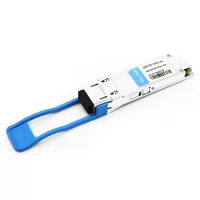 Mellanox MMA1L10-CR Compatible 100G QSFP28 LR4 1310nm (LAN WDM) 10km LC SMF DDM Transceiver Module
$285.00
Mellanox MMA1L10-CR Compatible 100G QSFP28 LR4 1310nm (LAN WDM) 10km LC SMF DDM Transceiver Module
$285.00
-
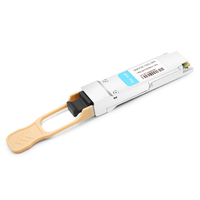 Mellanox MMA1B00-C100D Compatible 100G QSFP28 SR4 850nm 100m MTP/MPO MMF DDM Transceiver Module
$40.00
Mellanox MMA1B00-C100D Compatible 100G QSFP28 SR4 850nm 100m MTP/MPO MMF DDM Transceiver Module
$40.00
-
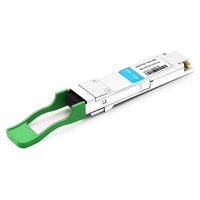 Mellanox MMA1L30-CM Compatible 100G QSFP28 CWDM4 1310nm 2km LC SMF DDM Transceiver Module
$110.00
Mellanox MMA1L30-CM Compatible 100G QSFP28 CWDM4 1310nm 2km LC SMF DDM Transceiver Module
$110.00
